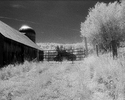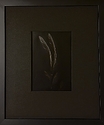Lachlan some years ago now I remember saying to Sandy King saying in a post or PM that Ilford had published a Pyrogallol/Phenidone developer that was in some ways asimilar to concentrated form of Pyrocat HD except using Pyrogallol instead of Pyrocatechin. It was in a Patent but was simply ID-3 with the Metol substituted by Phenidone in at the typical lower level needed due to it's increased activity.
In practice a comparison of D76 to Pyrocat HD ism't really valid, particularly as it's a high Sulphite solvent developer and uses a lower pH, however a comparison to Ilford Autophen their commercial PQ variant of ID-11 is valid in terms of the ratio of Phenidone to Hydroquinone or Pyrocatchin, I'm actually looking at the PQ & MQ rations in various Ilford developers at the moment as I want to mix a concentrated PQ contrast developer for printing. In the past I've always mixed ID-14.
It's not a simple change in ratio though as adjustments to sulphite and carbonate levels have a big impact. Two contrast developers have MQ ratios of appprox 1:8 ID-14 and 1:4 ID-19 respectively and Ilford's highest contrast PQ developer has a ratio of approx 1:40 and that matches the ratio of ID-72 the PQ version of ID-19.
Now adding DK50 to the mix is interesting as it's derived from the Wellington and Ward MQ BoraxMQ Fine Grain developer as you can see it's the same 1:1 MQ ratio, this ratio is still in use today in Kodak D96 motion picture developer
Wellington & Ward Borax MQ FG Developer
Metol 2g
Sodium Sulphite 20g
Hydroquinone 2g
Borax 20g
Water to 1 litre
Prior to DK50 there was probably a version with Borax, maybe D50. Looking at Kodak developers DK60 uses a touch more Metol, that's dropped back to 1:1 in DK60a.
Kodak's first true Fine Grain developer, published by Kodak Research uses only Metol and is a high Sulphite solvent developer but is very close to D76 which was published a year or so later.
Kodak went for a 1:2.5 MQ ratio for D76, Agfa a 1:2 for their fine grain MQ developer Agfa 44 (Agfa Ansco 17) with less sulphite and so did Adox. We used Adox Borax MQ replenished in deep tanks at work and supplied two other photographers there was a detectable improvement in terms of sharpness, shadow detail etc, but this is largely due to a more optimal level of Sulphite and less solvency. This mirrored Geoffrey Crawley's comments in various articles.
So while Pyrocat HD uses a 1:25 Phenidone to Pyrocatchin ratio, which is the same as the PQ ratio of Autophen, the Metol version Pyrocat M uses a 1:20 which means it's quite different we'd expect a ratio of 1.2.5 like ID-1/D76.
Ian





